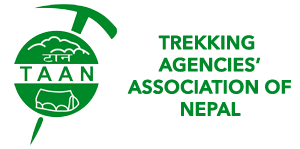
Rescue Flights
Rescue flights, also known as evacuation flights or emergency flights, are special air operations conducted to evacuate people from areas affected by natural disasters, political unrest, or other emergencies. These flights are often organized by governments, international organizations, or humanitarian agencies to ensure the safe evacuation of citizens or individuals in distress. They typically involve coordination between various stakeholders including airlines, government authorities, and relief organizations to prioritize safety and expedite the evacuation process. Rescue flights play a crucial role in providing timely assistance to those in need and are an integral part of disaster response efforts worldwide.
Rescue Flights in Nepal: A Lifeline Amidst the Himalayas
Nepal, nestled in the heart of the Himalayas, enchants adventurers and nature enthusiasts with its towering peaks, vibrant culture, and diverse landscapes. From the iconic summits of Everest to lush valleys and ancient temples, Nepal offers a sensory experience unlike any other. Yet, its rugged terrain and high-altitude conditions demand respect and preparation. For adventurers, Nepal is not just a destination but a profound journey into the unknown, revealing both beauty and risks. In this delicate balance, safety services like rescue flights in Nepal are crucial. Everest Flights, a leader in rescue operations, ensures swift evacuation for trekkers facing altitude sickness or injuries. Their expertise underscores Nepal’s allure and challenges. Moreover, as Nepal continues to captivate adventurers worldwide, rescue services remain essential, safeguarding those who explore its remote and challenging landscapes.
The Necessity of Helicopter Rescue in Nepal
Nepal’s diverse landscape includes the formidable Himalayas, remote villages, and dense forests. While this geography is stunning, it also presents numerous hazards such as altitude sickness, injuries, avalanches, and sudden weather changes. Traditional rescue methods are often impractical, making rescue flights indispensable.
1. Altitude Sickness and Medical Emergencies
One of the most common reasons for rescue flights in Nepal is altitude sickness. Additionally, trekkers ascending rapidly without proper acclimatization can suffer from Acute Mountain Sickness (AMS), High Altitude Pulmonary Edema (HAPE), or High Altitude Cerebral Edema (HACE). Consequently, these conditions require immediate medical attention, often necessitating a quick descent facilitated by helicopter rescue flights.
2. Injuries and Accidents
The rugged trails and challenging climbs of the Himalayas can lead to accidents and injuries. Whether it’s a simple sprain or a severe fracture, helicopter rescue flights in Nepal provide swift evacuation to medical facilities.
3. Natural Disasters
Nepal is prone to earthquakes, landslides, and avalanches. In such scenarios, Himalayan rescue flights are often the only means to reach and evacuate people from isolated or inaccessible areas.
Everest Flights: Pioneers in Rescue Operations
Everest Flights stands out as a leader in providing rescue flights in Nepal. Furthermore, with a fleet of well-maintained helicopters and a team of experienced pilots and rescue personnel, the company ensures rapid response and expert care in critical situations.
1. Advanced Helicopter Fleet:
Equipped with state-of-the-art helicopters, Everest Flights Company offers reliable and efficient rescue operations. Furthermore, the helicopters are designed to handle the harsh conditions of the Himalayas, ensuring safe and effective evacuations.
2. Experienced Pilots:
The company’s pilots are highly skilled and experienced in high-altitude flying. Therefore, their expertise allows us to navigate challenging terrains and unpredictable weather conditions, ensuring timely rescues.
3. Comprehensive Rescue Services:
From medical evacuations to emergency rescue in extreme weather conditions, Everest Flights Company provides a wide range of services tailored to meet the needs of those in distress. In light of this, their commitment to safety and efficiency makes us a trusted name in rescue operations.
Therefore, to know more about the rescue flight services in Nepal provided by Everest Flights, you can contact us.
Challenges and Risks of Rescue Flights
While rescue flights are a lifesaver, they come with their own set of challenges and risks.
1. Weather Conditions
Weather conditions in the Himalayas are famously unpredictable, often changing rapidly. Furthermore, fog, sudden snowstorms, and high winds frequently pose challenges, complicating rescue operations and making helicopter flights perilous. These conditions necessitate careful planning and readiness among rescue teams and pilots, emphasizing the need for flexibility and safety precautions to ensure successful operations in such hazardous environments.
2. Altitude and Terrain
Flying at high altitudes in mountainous terrain demands exceptional skill and experience from pilots. Therefore, they must navigate through narrow valleys and maneuver around towering peaks, often in challenging low-visibility conditions exacerbated by fog or snow. These circumstances require precise flying techniques and a deep understanding of the terrain to ensure safe passage and successful completion of flights. Pilots’ expertise is crucial in mitigating risks and ensuring passenger safety amidst the rugged and unpredictable Himalayan landscape.
3. Limited Resources
There are limited helicopters and resources available for rescue flights in Nepal. During peak trekking seasons or large-scale natural disasters, the demand for rescue services can exceed availability, leading to delays in response times. This situation underscores the importance of efficient coordination and prioritization by authorities to manage rescue efforts effectively. Additionally, it highlights the critical role of pre-planning and preparedness among trekkers and travelers to mitigate risks and enhance the likelihood of timely assistance in emergencies.
Future Prospects of Rescue Flights in Nepal
The future of rescue flights in Nepal looks promising with advancements in technology and increasing awareness about safety measures.
1. Improved Technology
Advancements in helicopter technology, such as better navigation systems and enhanced medical equipment, will make rescue flights more efficient and safer.
2. Training and Preparedness
There is a growing emphasis on training and preparedness for both rescuers and trekkers. More training programs for pilots and medical personnel will enhance the effectiveness of Himalayan rescue flights.
3. Increased Collaboration
Collaboration between government agencies, private companies, and international organizations can improve the infrastructure and resources available for rescue flights. Furthermore, joint efforts will ensure quicker response times and better-coordinated rescue missions.
Practical Tips for Trekkers
While rescue flights in Nepal provide a safety net, it is essential for trekkers to take precautions to minimize risks:
1. Proper Acclimatization
Allow time for your body to acclimatize to the altitude. Ascend gradually and take rest days to reduce the risk of altitude sickness.
2. Travel Insurance
Ensure you have comprehensive travel insurance that covers helicopter rescue flights. Moreover, medical evacuations can be costly, and insurance provides financial protection.
3. Stay Informed
Keep track of weather forecasts and trail conditions. Avoid trekking during adverse weather conditions and be aware of potential hazards.
4. Carry Communication Devices
Carry a satellite phone or a reliable communication device to call for help in case of emergencies. Many trekking routes have limited mobile network coverage.
Conclusion
In the rugged terrain of Nepal’s Himalayas, where beauty and danger intertwine, rescue flights stand as a vital lifeline for adventurers facing unforeseen challenges. Additionally, from altitude sickness to injuries and natural calamities, these operations by companies like Everest Flights exemplify a commitment to safety and swift response. Furthermore, rescue flights in Nepal ensure the timely evacuation and medical assistance necessary to protect trekkers in remote and challenging environments. As Nepal continues to enchant explorers worldwide, the evolution of rescue services reflects not only the region’s allure but also the imperative to ensure the well-being of those who journey into its remote and formidable landscapes. Furthermore, with advancements in technology and collaborative efforts on the horizon, the future promises even greater efficacy in safeguarding trekkers amid the awe-inspiring yet unforgiving heights of the Himalayas.





